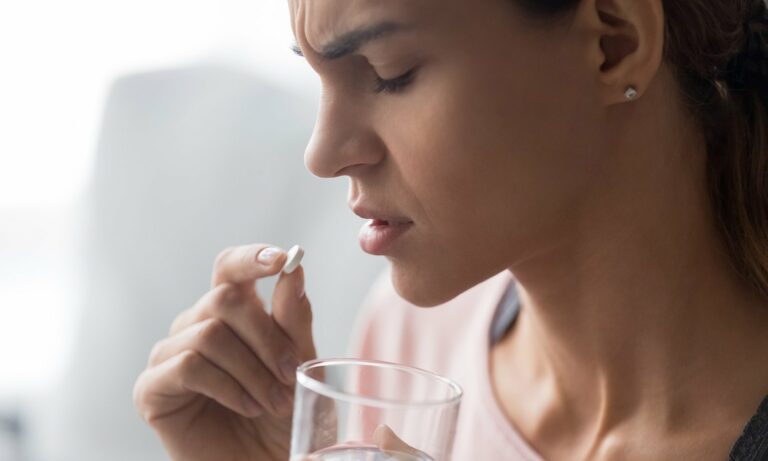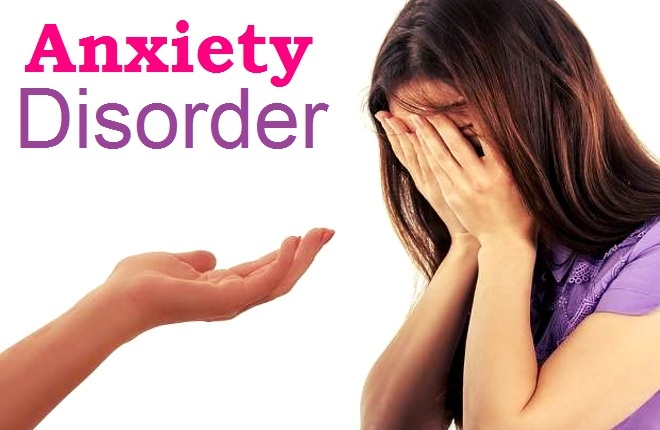Anabolic Steroids: What you should know
Author: Giselle Robel
Giselle Robel
Category: Health
Anabolic steroids are used for some medical conditions, but people also use them illegally in some sports settings. In addition to that, they use them to boost muscle mass, performance, and endurance and to shorten recovery time between workouts.
The drugs are artificially derived from the main male hormone testosterone. Testosterone is important for promoting and maintaining muscle growth and developing secondary male sex characteristics, such as a deepening voice and facial hair.
Anabolic steroids, also called anabolic-androgenic steroids (AASs), can build muscle and improve athletic performance, but they can also have significant adverse effects, especially when used incorrectly.
Long-term effects, for non-medical uses, are linked to heart problems, unwanted physical changes, and aggression. There is a growing concern worldwide about the non-medical use of steroids and their effects.
Street names include Arnolds, gym candy, pumpers, roids, and stackers.
What are anabolic steroids?

AASs are synthetic versions of the primary male hormone, testosterone. Which affect many parts of the body, including the muscles, bones, hair follicles, liver, kidneys, blood, immune system, reproductive system, and the central nervous system.
During puberty, increases in testosterone levels enable the development of characteristics such as facial and body hair growth, increased height and muscle mass, a deepening voice, and sex drive.
Testosterone can also contribute to competitiveness, self-esteem, and aggressiveness.
How do people misuse anabolic steroids?
People who misuse anabolic steroids usually take them orally, inject them into muscles, or apply them to the skin as a gel or cream. These doses are maybe 10 to 100 times higher than doses prescribed to treat medical conditions.
Commons patterns for misusing steroids include:
- cyclingtaking multiple doses for a period of time, stopping for a time, and then restarting
- stackingcombining two or more different steroids and mixing oral and/or injectable types
- pyramidingslowly increasing the dose or frequency of steroid misuse, reaching a peak amount, and then gradually tapering off to zero
- plateauingalternating, overlapping, or substituting with another steroid to avoid developing a tolerance
There is no scientific evidence that any of these practices reduce the harmful medical consequences of these drugs.
Types
There are up to 32 types of anabolic steroids listed on commercial websites.
Some have only medicinal uses, such as Nebido. Anadrol is an example of a steroid with both medicinal and performance uses.
Others, such as anadur, have no therapeutic use, but athletes use them.
People choose different types for different purposes:
- First is bulking steroids for building muscle
- Secondly, is performance steroids for strength and endurance
- And lastly, cutting steroids for burning fat
Other reasons for use include healing and recovery and enhancement of metabolism.
For both medical and illegal purposes, AASs can be taken:
- by mouth
- as pellets implanted under the skin
- by injection
- through the skin as a cream or gel
Oral forms are taken by mouth. They include:
- Fluoxymesterone (Halotestin), or Halo
- Mesterolone (Proviron)
- Methandienone (Dianabol), or Dbol
- Methyltestosterone (Virilon)
- Mibolerone (Cheque)
- Oxandrolone (Anavar, Oxandrin), or Var
- Oxymetholone (Anadrol), or Drol
- Stanozolol (Winstrol), or Winny
Injectable forms include:
- Boldenone undecylenate (Equipoise), or EQ
- Methenolone enanthate (Primobolan), or Primo
- Nandrolone decanoate (Deca Durabolin), or Deca
- Nandrolone phenpropionate (Durabolin), or NPP
- The, Testosterone cypionate (Depotest)
- And, Testosterone enanthate (Andro-Estro)
- And also,Testosterone propionate (Testex)
- Trenbolone acetate (Finajet), or Tren
AASs travel through the bloodstream to the muscle tissue, where they bind to an androgen receptor. The drug can subsequently interact with the cell's DNA and stimulate the protein synthesis process that promotes cell growth.
Medical uses
Some types of steroids are commonly used for medical treatment. For example, corticosteroids can help people with asthma to breathe during an attack.
Testosterone is also prescribed for a number of hormone-related conditions, such as hypogonadism.
However, AASs are not commonly prescribed as a treatment.
In the U.S., an AAS is a schedule III controlled substance available only by prescription. The use of these drugs is only legal when prescribed by a medical provider.
Medical conditions they are used to treat include:
Testosterone and several of its esters, as well as methyltestosterone, nandrolone decanoate, and oxandrolone, are the main anabolic-androgenic steroids currently prescribed in the U.S.
Steroids in sport
However, non-medical use of steroids is not permitted in the U.S. Under the Controlled Substance Act, unlawful possession and distribution are subject to federal and state laws.
As it is not legal for athletic purposes, there is no legal control over the quality or use of drugs sold for this purpose.
On the other hand, illegal steroids are obtained through the internet and through informal dealers, like other illegal drugs. However, they may also be available through unscrupulous pharmacists, doctors, and veterinarians.
In addition to that, Designer steroids are sometimes produced to enable athletes to pass doping tests. Their composition and use are entirely unregulated, adding to the hazards they pose.
Athletes often consume steroids on a trial-and-error basis, using information gained from other athletes, coaches, websites, or gym gurus. As a result, they do not have access to medical information and support that can keep them safe while using these drugs.
How do anabolic steroids affect the brain?
Anabolic steroids work differently from other drugs of abuse; they do not have the same short-term effects on the brain. The most important difference is that steroids do not directly activate the reward system to cause a high; they also do not trigger rapid increases in the brain chemical dopamine, which reinforces most other types of drug-taking behavior.
Misuse of anabolic steroids might lead to negative mental effects, such as:
- paranoid (extreme, unreasonable) jealousy
- extreme irritability and aggression (roid rage)
- delusions false beliefs or ideas
- impaired judgment
- mania
What are other health effects of anabolic steroids?
Aside from mental effects, steroid use commonly causes severe acne. It also causes the body to swell, especially in the hands and feet.
Long-Term Effects
Anabolic steroid misuse might lead to serious, even permanent, health problems such as:
- kidney problems or failure
- liver damage and tumors
- enlarged heart, high blood pressure, and changes in blood cholesterol, all of which increase the risk of stroke and heart attack, even in young people
- increased risk of blood clots
Several other effects are gender- and age-specific:
- In men:
- shrinking testicles
- decreased sperm count
- baldness
- development of breasts
- increased risk for prostate cancer
- In women:
- growth of facial hair or excess body hair
- decreased breast size
- male-pattern baldness
- changes in or stop in the menstrual cycle
- enlarged clitoris
- deepened voice
- In teens:
- stunted growth (when high hormone levels from steroids signal to the body to stop bone growth too early)
- stunted height (if teens use steroids before their growth spurt)
Some of these physical changes, such as shrinking sex organs in men, can add to mental side effects such as mood disorders.
Are anabolic steroids addictive?
Even though anabolic steroids do not cause the same high as other drugs, they can lead to a substance use disorder. A substance use disorder occurs when a person continues to misuse steroids, even though there are serious consequences for doing so. The most severe form of a substance use disorder is addiction. People might continue to misuse steroids despite physical problems, high costs to buy the drugs, and negative effects on their relationships. These behaviors reflect steroids’ addictive potential. Research has further found that some steroid users turn to other drugs, such as opioids, to reduce sleep problems and irritability caused by steroids.
People who misuse steroids might experience withdrawal symptoms when they stop use, including:
- fatigue
- restlessness
- loss of appetite
- sleep problems
- decreased sex drive
- steroid cravings
One of the more serious withdrawal symptoms is depression, which can sometimes lead to suicide attempts.
How can people get treatment for anabolic steroid addiction?
Some people seeking treatment for anabolic steroid addiction have found a combination of behavioral therapy and medications to be helpful.
In certain cases of addiction, patients have taken medicines to help treat symptoms of withdrawal. For example, health care providers have prescribed antidepressants to treat depression and pain medicines for headaches and muscle and joint pain.
Withdrawal
Misuse of steroids can lead to withdrawal symptoms when the person stops taking them.
Withdrawal symptoms include:
- fatigue
- restlessness
- mood swings
- depression
- insomnia
- reduced sex drive
- cravings
The first step in treating anabolic steroid abuse is to discontinue use and seek medical help in order to address any psychiatric or physical symptoms that might occur.













